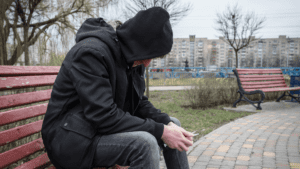Imagine a medication so powerful that it can reverse the potentially deadly effects of an opioid overdose within minutes. This is not a hypothetical scenario – naloxone is that life-saving drug. As the opioid epidemic continues to devastate communities worldwide, naloxone stands as a beacon of hope for countless individuals and their families. Let us uncover the critical role naloxone plays in combating the opioid crisis and saving lives.
Key Takeaways
- Naloxone is a life-saving treatment used to combat opioid addiction, and recognizing its critical role in seeking help for substance use disorder is essential.
- Various forms of naloxone administration are available, including nasal spray, injectable naloxone and auto-injectors.
- Naloxone has proven effective in improving public health outcomes by reducing emergency room visits related to opioids and saving lives.
Understanding Naloxone and Its Critical Role
Naloxone plays a significant role in combating opioid addiction, an opioid use disorder that is a mental illness impacting numerous individuals worldwide. Substance use disorder (SUD), a mental health condition characterized by problematic patterns of substance use, is one of the various substance use disorders that naloxone helps to address. Substance abuse, often used interchangeably with substance use disorder, carries a negative connotation and stigma. Consulting a mental health professional can be beneficial in managing SUD and other mental health conditions. The term “substance use disorder” is preferred over “addiction” due to the stigma and negativity associated with the latter.
Administering naloxone during an opioid overdose can save a person’s life by temporarily reversing the overdose, providing a chance for individuals to seek further treatment. Recognizing naloxone’s role as a life-saving treatment and seeking immediate help when showing signs of SUD is key to successful recovery.
The Science Behind Naloxone
Naloxone’s ability to save lives in cases of opioid overdose is due to its unique mechanism of action. It binds to opioid receptors in the brain, reversing or inhibiting the effects of other opioids. This medication is a relative of morphine and is recognized as an opiate antagonist.
The physiological responses to naloxone include withdrawal symptoms such as headaches, changes in blood pressure, and rapid heart rate. It reverses the effects of exogenous opioids, including analgesia, respiratory depression, and sedation. Naloxone’s ability to save lives marks it as a key instrument in the fight against opioid addiction.
Forms of Naloxone Administration
Naloxone can be administered in various forms, each with its own benefits and considerations. These forms include nasal spray, injectable naloxone, and auto-injectors.
The subsequent sections will examine each form of naloxone administration along with their respective benefits.
Nasal Spray
Naloxone nasal spray offers a user-friendly and non-invasive option for administering the life-saving medication. The method involves administering 8 milligrams (1 spray) into one nostril, with additional sprays given into the other nostril at intervals of 2 to 3 minutes if needed. The onset of action for the nasal spray is typically within 2 to 5 minutes.
The ease of use and rapid action make the nasal spray an attractive option for both medical professionals and laypersons alike. It allows for quick intervention in cases of opioid overdose, increasing the chances of survival and recovery.
Injectable Naloxone
Injectable naloxone is a more traditional method of administration, which requires some knowledge of injection techniques but offers rapid results. It can be administered into a muscle, beneath the skin, or into a vein to swiftly reverse the effects of opioids and restore normal breathing.
Despite its effectiveness, injectable naloxone does have some drawbacks. Some individuals may have a fear of needles, making injectable naloxone less desirable for them. Additionally, injectable naloxone may not be readily available at all pharmacies, requiring individuals to obtain it from specific locations or healthcare providers.
Auto-Injector
Auto-injectors provide a pre-measured dose of naloxone and are designed for easy use, even by those without medical training. These devices are simple to operate and require minimal instruction, injecting the medication directly into the thigh muscle when activated.
The simplicity and convenience of auto-injectors make them a popular choice for those who may not have medical training but are at risk of experiencing or witnessing an opioid overdose. This form of naloxone administration ensures that life-saving intervention is available when needed most.
Accessing Naloxone: Availability and Prescription
The availability of naloxone has been increasing in recent years, making it more accessible to those in need. Here are some ways in which naloxone can be accessed:
- In some states, naloxone is authorized as an over-the-counter medication, allowing it to be sold and distributed without a prescription.
- Other states may require a prescription for naloxone.
- Some states have specific regulations concerning naloxone access.
Community programs are also playing a significant role in providing access to naloxone by offering educational and training initiatives, distribution schemes, and overdose prevention efforts. These efforts aim to ensure that naloxone is readily available to save lives in cases of opioid overdose.
Training and Education on Naloxone Use
Appropriate training and education are necessary for the safe and effective use of naloxone. The essential steps for proper naloxone administration include administering 4 milligrams (mg) of naloxone (equivalent to one spray) into one nostril, with additional sprays given into the other nostril every 2 to 3 minutes if necessary.
Accredited online courses, such as the one available at getnaloxonenow.org, offer naloxone training. This course, endorsed by a national institute, recommends regular refresher training every two years to ensure that individuals remain prepared to administer naloxone effectively in emergency situations.
Integrating Naloxone into Comprehensive Treatment Plans
Naloxone should be included in comprehensive treatment strategies for opioid addiction, which may also encompass medication-assisted treatment, behavioral therapy, and support networks. Naloxone can be administered in conjunction with medications such as buprenorphine or methadone, which are utilized for long-term treatment of opioid addiction.
The inclusion of naloxone in comprehensive treatment strategies offers several benefits, including:
- Its effectiveness in treating overdoses
- Broader prescribing to vulnerable patients
- Lowered risk of diversion and misuse
- Prevention of fatal overdoses
By including naloxone as part of a holistic approach to opioid addiction treatment, individuals are better equipped to navigate the challenges of recovery and maintain long-term sobriety.
Legal Considerations and Good Samaritan Laws
Understanding the legal implications of naloxone use is important for individuals who may have to administer the medication in emergencies. Good Samaritan laws related to naloxone administration provide legal protections for individuals who call for emergency assistance in the event of an opioid overdose.
These laws typically offer immunity from arrest, charges, or prosecution for drug-related offenses to those who administer naloxone or seek help for someone experiencing an overdose. The specifics of these laws may vary by state, but their overall aim is to encourage bystanders to take action in cases of opioid overdose without fear of legal repercussions.
The Impact of Naloxone on Public Health
The widespread availability and use of naloxone have had a significant impact on public health. Studies have shown that when naloxone and overdose education are readily available, opioid-related emergency room visits can be reduced. This highlights the importance of making access to naloxone a priority in the fight against the opioid epidemic.
Naloxone serves a significant role in harm reduction strategies by:
- Counteracting the effects of opioid overdose, such as respiratory and central nervous system depression
- Expanding the use of naloxone
- Decreasing the stigma associated with naloxone
- Saving lives
- Improving public health
These are critical components of mental health services and harm reduction initiatives.
Personal Stories of Naloxone: Lives Saved
Personal stories of naloxone use highlight the life-saving potential of this medication and the importance of increasing awareness and access to it. From law enforcement officers who credit naloxone for saving their lives to survivors now in recovery sharing their stories, the power of naloxone to change lives is evident.
These personal accounts serve as a testament to the impact of naloxone on individuals and families affected by opioid addiction. They underscore the urgent need for continued efforts to promote naloxone awareness and accessibility, ensuring that this life-saving medication reaches those who need it most.
Opioid Addiction Resources and Support Networks
Resources and support networks for opioid addiction are available to help individuals and family members navigate the challenges of recovery and maintain long-term sobriety. Admissions navigators can provide additional complimentary resources, including treatment options and self-help support groups.
Behavioral therapies, including family therapy, and self-help support groups like Narcotics Anonymous play pivotal roles in drug addiction treatment by addressing drug abuse and:
- Helping individuals change their attitudes and behaviors towards drug use
- Developing healthy coping mechanisms
- Providing invaluable assistance and guidance in the recovery journey
- Promoting long-lasting change and improved well-being
Summary
Naloxone is a powerful, life-saving medication that has the potential to turn the tide in the ongoing battle against the opioid epidemic. By understanding the importance of naloxone, its various forms of administration, and its role in comprehensive treatment plans, we can work towards reducing opioid overdose deaths and improving public health. Let’s continue to raise awareness and expand access to naloxone, ensuring that this crucial medication reaches those who need it most.
Frequently Asked Questions
What is naloxone as needed for?
Naloxone is a life-saving medication that can reverse an opioid overdose when given in time. It attaches to opioid receptors and reverses and blocks the effects of other opioids, and is easy to use and small to carry. As such, it is needed as an emergency response to opioid overdoses.
How does naloxone work on the brain?
Naloxone works by blocking the effects of opiates on the brain and restoring breathing. It does this by competing with opioids for receptor sites in the brain, replacing them and reversing overdose effects. Naloxone will only work if a person has opiates in their system and is safe to use for practically anyone.
What medications should not be taken with naloxone?
Patients should avoid taking any benzodiazepines, alcohol, barbiturates, or sedatives with naloxone as they can interact and cause serious adverse effects.
What happens when you give Narcan to someone who doesn t need it?
Administering naloxone to someone who is not experiencing an opioid overdose is safe and won’t have any effect as it has no effect on someone who does not have opioids in their system. Therefore, if someone is unsure whether an individual is experiencing an opioid overdose or not, it is still recommended to administer naloxone and call 911 immediately.
What is naloxone commonly given to treat?
Naloxone is a medication used to rapidly reverse opioid overdose. It works by blocking the effects of opioids on the brain and restoring breathing, and is effective in treating overdoses from drugs such as heroin, fentanyl, morphine, and oxycodone.


